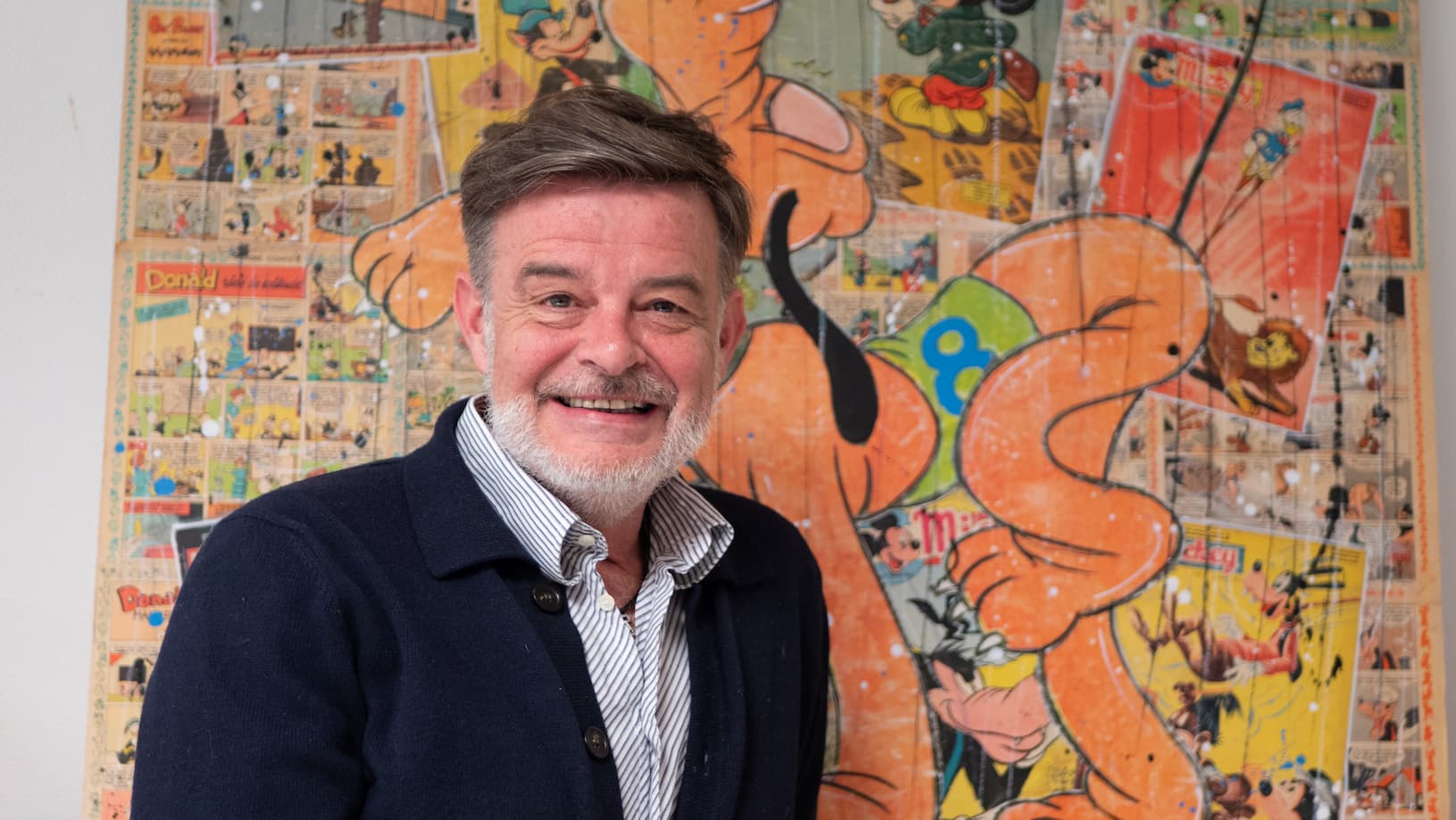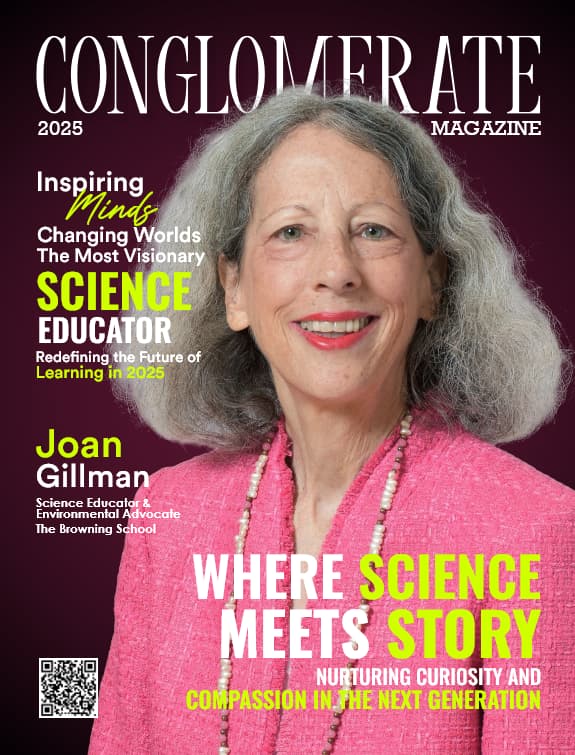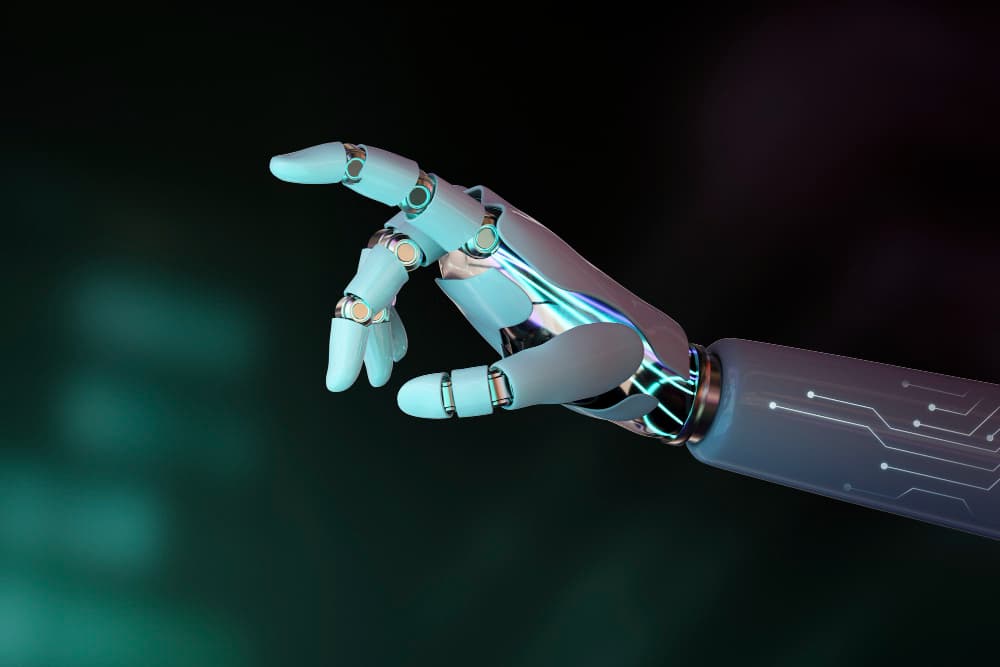In the bustling innovation corridors of Asia, where ideas transform into market realities within days rather than quarters, Loïck Tanguy discovered something profound about the future of work. After a decade of navigating the hyperkinetic digital landscapes of China, South Korea, and Singapore, he returned to Europe with a radical thesis: the next wave of disruption wouldn’t just change how we work, but fundamentally redefine what a “worker” could be.
Today, as the General Manager of WORKAIT.COM, Loïck stands at the intersection of three revolutionary forces reshaping our economic fabric. XR creates immersive presence, AI provides autonomous intelligence, and Web3 enables verifiable ownership. Together, they’re not just disrupting traditional workflows; they’re birthing entirely new economies where autonomous agents collaborate with humans in ways previously confined to science fiction.
“Disruption today isn’t just about replacing one tool with another,” Loïck reflects on his journey from digital growth strategist to future-of-work architect. “It’s about fundamentally reshaping the value chain of work, creativity, and decision-making. We’re not just adding AI to the workforce; we’re transforming the very idea of what a ‘worker’ can be.”
This transformation isn’t happening in isolation. Founded in May 2025 with operations spanning Paris and Delaware, WORKAIT.COM represents more than a startup; it’s a manifestation of Loïck’s decade-long exploration of how technology can amplify human potential rather than replace it. The company’s recent recognition as a finalist in the ManpowerGroup “Future of Work” startup challenge at VivaTech 2025 validates a vision that bridges continents, cultures, and technological paradigms.
THE ASIAN ACCELERATION: LESSONS FROM THE FAST LANE
Loïck’s Asian sojourn wasn’t merely professional development; it was an intensive education in the art of velocity. Working across multiple markets, he witnessed firsthand how different cultural approaches to risk and innovation could dramatically accelerate technological adoption.
“Asia taught me three fundamental lessons that now shape everything we do at WORKAIT,” Loïck explains. “First, build for scale from Day 1. Platforms like Alibaba, Grab, and ByteDance approach product design with scale in mind even at the prototype stage. That mindset forces clarity: Is this replicable? Is it modular? Could it work in 10 cities or countries?”
This scaling mindset permeates WORKAIT’s architecture. Every AI worker is designed with template-based, reusable logic, enabling rapid deployment across diverse client needs with minimal friction. It’s an approach that transforms what could be a bespoke consulting service into a scalable platform business.

Don’t chase hype; chase friction. The most successful innovators I’ve met are laser-focused on where value is leaking in a system and how tech can fix it.
The second lesson proved equally transformative. “Ecosystem partnerships are everything,” Loïck notes. “Asia thrives on collaborative innovation. Startups partner with corporates, VCs sit on go-to-market taskforces, and regulators often create testbeds.” This collaborative DNA has become central to WORKAIT’s strategy, manifesting in partnerships with domain experts who design AI workers, SMBs that deploy them, and distribution partners who extend their reach.
Perhaps most importantly, Asia taught Loïck the art of localization without losing essence. “Asian companies understand that you can’t export tech; you need to embed it in local context. Language, workflow, cultural nuance all matter.” This insight explains why WORKAIT’s AI workers are shaped by real human experts from target industries, ensuring relevance across borders while maintaining contextual authenticity.
THE EUROPEAN RECALIBRATION: DEPTH MEETS VELOCITY
Returning to Europe, Loïck encountered a different innovation rhythm. Where Asia moved with breathtaking speed, Europe brought something equally valuable: depth of thinking and systematic approach to complex problems.
“Europe isn’t less innovative; it’s just less agile,” Loïck observes. “The innovation is there in research labs, in AI centers, in academia. What’s missing sometimes is the mechanism to convert prototypes into products, and research into revenue.”
This observation shaped WORKAIT’s European strategy. Rather than importing Asian velocity wholesale, Loïck recognized the need for a hybrid approach that respected European values while accelerating execution. The result is a company that combines rapid iteration with thoughtful implementation, addressing the cultural skepticism toward hype-driven technologies by focusing relentlessly on utility and ROI.
The European market presented unique adoption challenges. “First, fragmented regulation and slower institutional alignment make pilots harder to scale cross-border,” Loïck explains. “Second, there’s a deep-rooted skepticism toward hype-driven technologies, especially when they’re not tied to clear ROI. Third, many European SMEs are still in early digital maturity phases.”
Rather than viewing these as obstacles, Loïck reframed them as design constraints that could drive innovation. WORKAIT’s approach emphasizes backend enablement over flashy front-ends, focusing on making workflows smarter, traceable, and interoperable behind the scenes.
THE CONVERGENCE MOMENT: WHEN TECHNOLOGIES BECOME USEFUL
For Loïck, 2025 represents an inflection point where experimental technologies finally achieve practical utility. “We’re entering a moment where these technologies are finally interoperable and useful, not just experimental,” he explains. “AI gives us minds, XR gives us presence, and Web3 offers ownership and trust.”
This convergence enables what Loïck calls “autonomous value creation” as a business model. AI agents, XR interfaces, and Web3 infrastructure allow services to be delivered continuously, contextually, and verifiably with minimal human intervention. It’s not automation in the traditional sense; it’s augmentation that amplifies human capability while maintaining human oversight.
The practical implications are profound. At WORKAIT, this convergence manifests in AI workers that don’t just execute tasks but understand context, learn from interaction, and improve over time. These aren’t simple chatbots or basic automation tools; they’re sophisticated digital entities trained by domain experts and capable of complex reasoning within specific professional contexts.
“Every AI worker is shaped by a real expert,” Loïck emphasizes. “This keeps us grounded in authentic expertise while enabling scale that would be impossible with traditional human-only models.”
THE PRAGMATIC PHILOSOPHY: PEOPLE OVER HYPE
Central to Loïck’s leadership philosophy is a commitment to pragmatic innovation over technological exhibitionism. Three core values guide WORKAIT’s development: Human-First Design, Radical Transparency, and Pragmatic Innovation.
“We don’t chase trends; we solve painful, recurring problems for SMEs and mid-sized companies,” Loïck explains. “People over hype, and outcomes over noise.”
This philosophy manifests in WORKAIT’s approach to client engagement. Rather than leading with technological capabilities, the company begins by understanding business pain points and mapping them to autonomous solutions. The goal isn’t to impress with AI sophistication but to deliver measurable value that directly impacts bottom-line results.
The human-first approach extends to how WORKAIT positions AI workers within existing teams. Rather than replacement, the focus is on progressive autonomy where AI workers first assist, then gradually assume full ownership of specific tasks. This builds trust while minimizing organizational disruption.
“The biggest risk isn’t adopting too early,” Loïck argues. “It’s waiting too long and losing your margins to someone who didn’t.”
REDEFINING SALES AND MARKETING IN THE AI AGE
As GM for sales and marketing, Loïck has had to reconceptualize traditional go-to-market strategies for an AI-powered economy. The shift, he explains, is from content marketing to contextual orchestration.
“In an AI-powered economy, the real advantage comes from how well you personalize at scale,” Loïck notes. “Not just who sees your message, but when, where, and how they interact with it.”
This philosophy is embodied in WORKAIT’s own sales stack, where AI agents qualify leads, personalize onboarding flows, and follow up on dormant accounts with tailored approaches. It’s meta-innovation: using AI workers to sell AI workers, demonstrating value through direct experience rather than theoretical promises.
The data-driven approach extends beyond traditional metrics. WORKAIT tracks performance across three critical dimensions: Acquisition Cost by Use Case, Activation Time, and Retention by Job Type. This granular analysis has revealed unexpected insights, such as the discovery that SMEs with fewer than 50 employees show faster AI adoption than larger, more bureaucratic firms.
One particular success story illustrates the power of this approach. Working with Epresspack, a B2B SaaS company, WORKAIT deployed an AI system for inbound customer qualification. Rather than using traditional forms or chatbots, the system engaged leads in natural conversation, understood their context, and routed them to appropriate sales funnels. The results were transformative, demonstrating that AI’s value lies not in replacing human judgment but in augmenting it with scalable intelligence.
DEMYSTIFYING AI: SEPARATING REALITY FROM HYPE
Loïck’s extensive experience has given him a unique perspective on persistent AI myths, particularly in sales and marketing contexts. Three misconceptions consistently emerge in client conversations.
The first myth positions AI as a silver bullet. “Many assume that plugging in an AI tool will fix their funnel,” Loïck explains. “In reality, AI amplifies what’s already there. If your messaging is unclear or your audience isn’t defined, AI just helps you fail faster.”
The second myth suggests AI replaces creativity. “The best use cases we’ve seen involve AI freeing up human marketers to be more creative by automating repetitive segmentation, lead scoring, or A/B testing tasks,” Loïck counters.
Perhaps most perniciously, the third myth claims AI is only for large companies. “We’re seeing SMEs adopt AI workers faster than larger firms because they’re more agile and pain-aware,” Loïck notes. “With no IT red tape, they can test and integrate in days, not months.”
This demystification is central to WORKAIT’s educational approach. Rather than overselling AI capabilities, the company focuses on realistic value propositions that align with actual business needs and constraints.
THE INTEGRATION IMPERATIVE: STARTING NARROW, SCALING SMART
For organizations intimidated by the scope of AI transformation, Loïck advocates a focused approach: “Start narrow, not broad. Focus on a single workflow or job function where AI can deliver a clear win. Don’t try to ‘transform your company’; try to solve a $10,000/month problem first.”
This methodology involves identifying job roles that are highly repetitive or rules-based, processes with clear KPIs, and bottlenecks where existing staff is stretched thin. From there, organizations can deploy AI workers with human oversight and iterate toward progressive autonomy.
WORKAIT supports this approach with onboarding playbooks and a growing library of industry-specific AI workers created by real experts. This enables clients to start fast with confidence, reducing the risk of failed implementations that can poison organizational attitudes toward AI adoption.
EMERGING BUSINESS MODELS: THE AUTONOMOUS ECONOMY
Looking ahead, Loïck envisions several business models emerging from the convergence of AI, XR, and Web3 technologies. The most significant is what he calls “autonomous value creation,” where services are delivered continuously and contextually with minimal human intervention.
“The next few years will see businesses adopt AI workers the way they currently hire freelancers or SaaS tools,” Loïck predicts. “These AI workers, trained by real domain experts, will be licensed, subscribed to, or even traded in future marketplaces.”
Other emerging models include pay-per-skill ecosystems where AI agents execute microservices based on blockchain-verified credentials, XR-powered customer education-as-a-service, and reputation-based networks where digital workers are ranked on-chain by performance rather than promises.
The key enabler is interoperability. “The future will belong to platforms that allow these technologies to talk to each other and generate outcomes together, not in silos,” Loïck explains.
INDUSTRY TRANSFORMATION: THE UNDERESTIMATED IMPACT
Several industries remain, in Loïck’s view, dramatically underestimating the transformative potential of AI and XR. Legal services, healthcare administration, compliance, and industrial manufacturing are constrained by legacy systems, cultural inertia, and regulatory pressure.
“In legal services, the idea that a junior associate can be replaced by a context-aware AI trained by a former partner is still seen as sci-fi,” Loïck observes. “But we’re already piloting AI workers who can do case analysis, contract review, or client intake 24/7 and with full traceability.”
The same dynamic applies to B2B customer service and supply chain operations, where mid-sized firms assume AI requires massive budgets. “They’re the ones who benefit the most from autonomous, scalable labor,” Loïck argues. “They’re not replacing people; they’re augmenting and accelerating their core business.”
THE ECOSYSTEM IMPERATIVE: COLLABORATION AS COMPETITIVE ADVANTAGE
Loïck’s experience across different markets has reinforced his belief that partnerships are essential for scaling future-focused solutions. “No single company, especially in AI, XR, or Web3, can deliver end-to-end value on its own,” he explains. “The real acceleration comes from platform thinking and ecosystem orchestration.”
WORKAIT’s ecosystem encompasses domain experts who design AI workers, SMBs and mid-sized firms who deploy them, and distribution partners who extend reach across sectors and regions. This collaborative approach, inspired by Asian market dynamics, enables rapid scaling while maintaining quality and relevance.
The company’s participation in programs like Founder University (LAUNCH) and VivaTech demonstrates this ecosystem thinking in action. “Innovation scales best when it’s part of a broader mission, supported by investors, enterprise pilots, and institutional support,” Loïck notes.
PERSONAL MISSION: BUILDING TECHNOLOGY THAT SERVES HUMANITY
Despite his focus on cutting-edge technology, Loïck’s ultimate motivation remains deeply human. His most rewarding moment came not from technological achievement but from recognition that validated his mission to redefine how humans and technology collaborate.
“Being selected as a finalist in the ManpowerGroup ‘Future of Work’ startup challenge at VivaTech 2025 validated a decade of work spent exploring how humans and technology can truly collaborate,” Loïck reflects. “But the real reward is seeing an idea move from vision to traction, especially when it empowers others.”
This human-centric approach extends to his advice for young professionals entering the XR/Web3/AI space. His guidance emphasizes solving real problems over chasing hype, building fast over endless planning, and collaborating over solo achievement.
“Don’t chase hype; chase friction,” Loïck advises. “The most successful innovators I’ve met are laser-focused on where value is leaking in a system and how tech can fix it.”
THE CONTINUOUS LEARNER: STAYING AHEAD OF THE CURVE
In a field characterized by exponential change, Loïck maintains relevance through what he calls “learning by doing.” His approach combines obsessive reading with rapid testing, founder conversations, and constant experimentation.
“I stay ahead by staying close to builders, to users, and to contradictions,” Loïck explains. “At WORKAIT, we treat every client interaction as a data point. We learn from real deployments, iterate, and push our assumptions every week.”
This learning mindset extends to his leadership philosophy. Rather than positioning himself as the definitive expert, Loïck embraces uncertainty as a driver of innovation. “You’ll never know enough,” he tells aspiring innovators. “So start small, build something imperfect, and get feedback.”
LEGACY IN THE MAKING: REDEFINING WORK FOR A NEW CENTURY
As WORKAIT continues to grow and evolve, Loïck’s vision extends beyond company success to societal transformation. He envisions a future where the combination of AI, XR, and Web3 technologies creates new forms of economic participation and value creation.
“We’re not just building a company; we’re contributing to a fundamental shift in how work operates,” Loïck explains. “Every AI worker we deploy, every client we serve, every partnership we form is part of a larger mission to make technology serve human potential.”
This mission resonates particularly strongly in Europe, where the balance between innovation and social responsibility remains a defining characteristic. Loïck’s approach demonstrates that technological disruption need not come at the expense of human dignity or social cohesion.
The future Loïck envisions is one where autonomous agents and human workers collaborate seamlessly, where expertise is democratized at scale, and where the value created by technology is distributed more equitably across society. It’s an ambitious vision, but one grounded in practical experience and proven results.
“The tools will change, but the mission should stay constant,” Loïck concludes. “Build things that make people’s lives better.”
In an age of artificial intelligence and autonomous systems, perhaps the most revolutionary act is maintaining focus on fundamentally human outcomes. Loïck Tanguy’s journey from Asian markets to European innovation labs, from traditional marketing to AI-powered transformation, demonstrates that the future of work isn’t about replacing humans with machines. It’s about creating new forms of collaboration that amplify human potential while solving real problems for real people.
As WORKAIT continues to bridge the gap between technological possibility and practical implementation, Loïck’s leadership offers a roadmap for navigating the complex landscape of AI adoption, XR integration, and Web3 implementation. His success lies not in predicting the future but in building it, one AI worker at a time, one client relationship at a time, one solved problem at a time.
The disruption Loïck represents isn’t just technological; it’s philosophical. In a world increasingly defined by artificial intelligence, he reminds us that the most important intelligence remains fundamentally human: the wisdom to know what problems are worth solving, the courage to experiment with new solutions, and the compassion to ensure that technological progress serves human flourishing.







